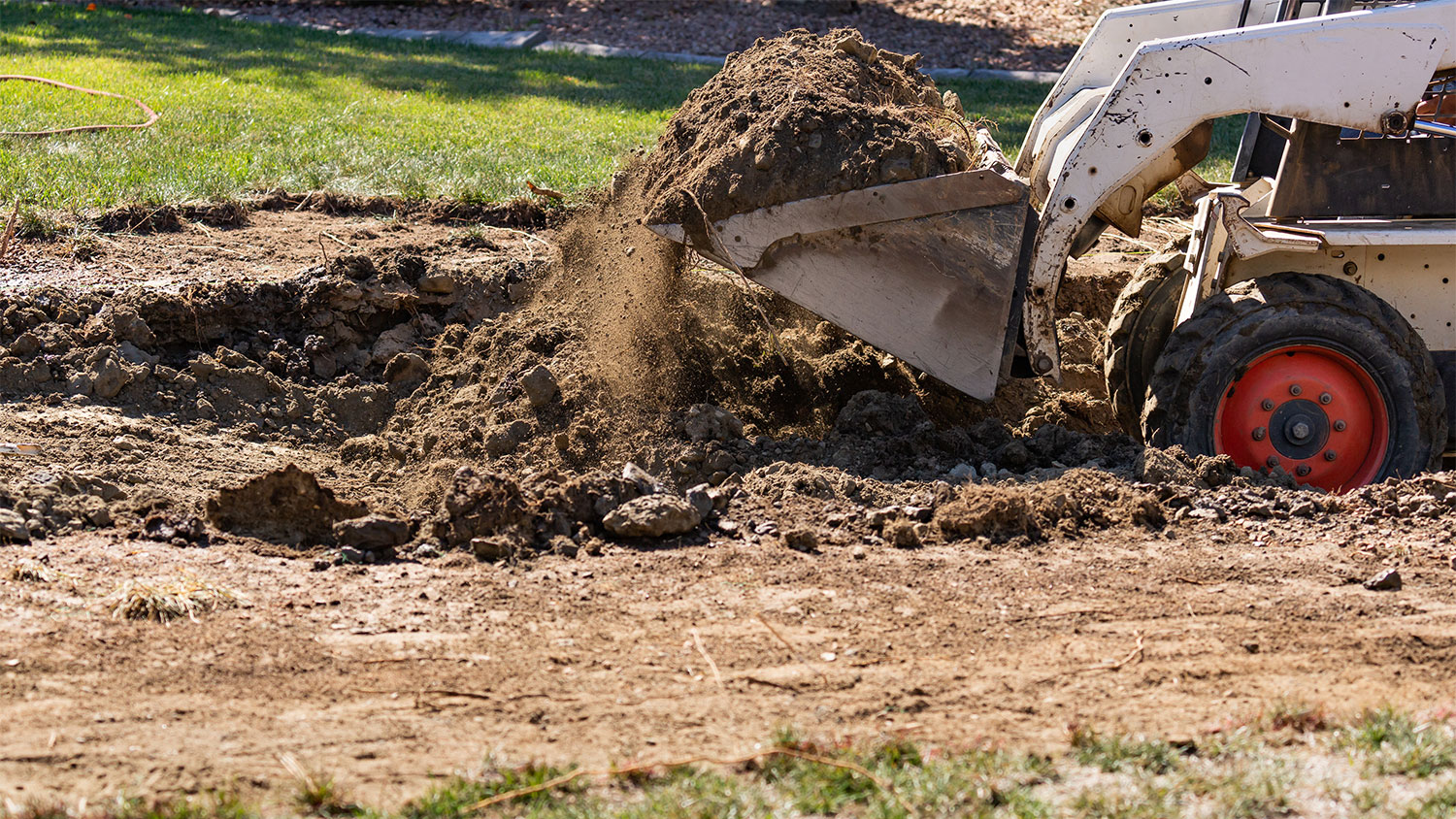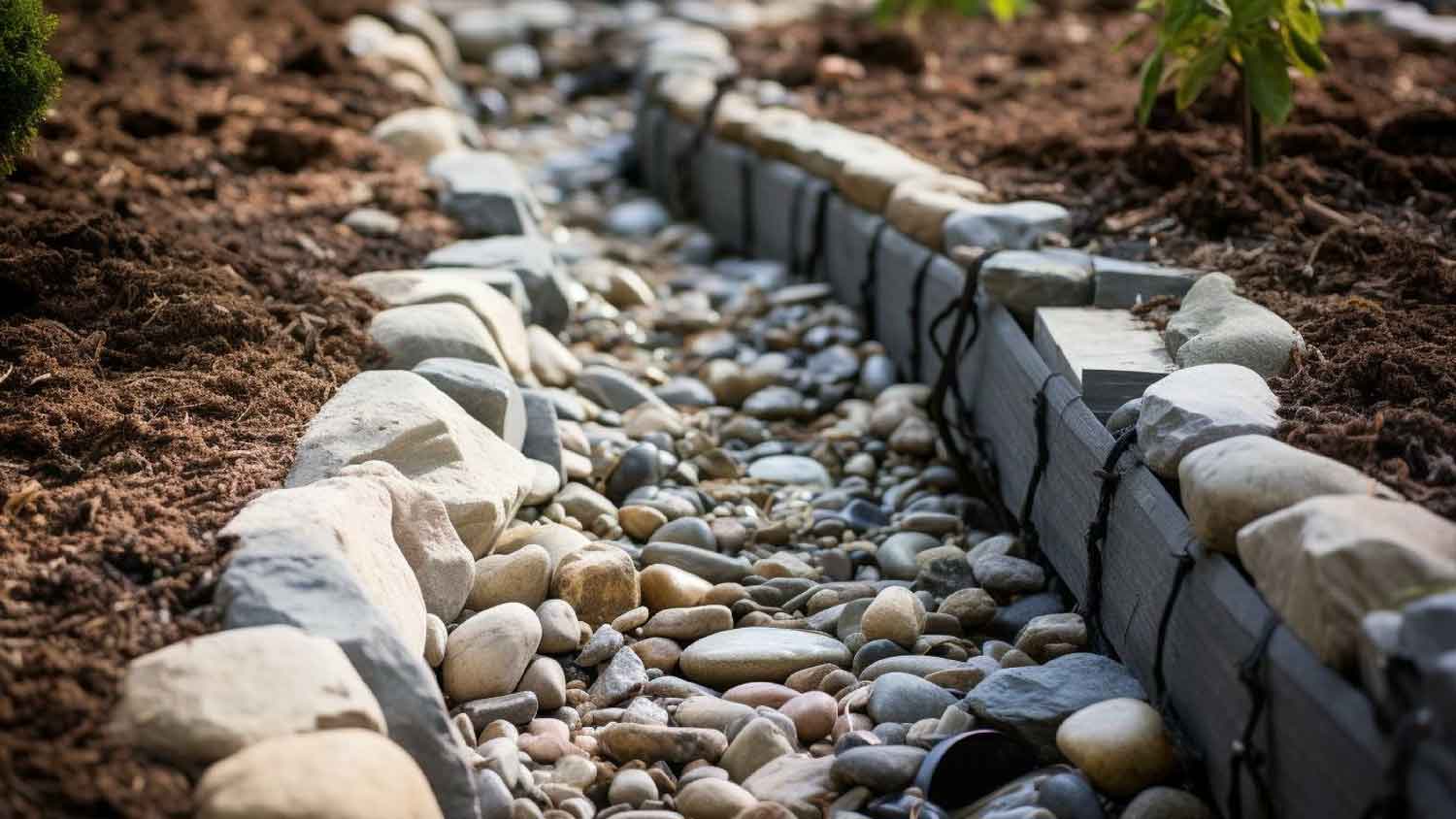
Discover how much trees cost to plant, exploring how factors like size, quantity, materials, and labor affect the total cost.
Christmas light installation costs an average of $443


On average, professional Christmas light installation costs between $220 and $683, depending on project size.
The average Christmas light installation project costs $443.
Cost factors include labor, linear footage, and lighting type.
Hiring a professional ensures proper wiring, a safe setup, and a festive display.
This article was updated using automation technology and thoroughly reviewed for accuracy by HomeAdvisor Editor Ryan Noonan.
Average Christmas light installation costs range from $220 to $683, with an average cost of $443. Multi-story homes can reach $1,300. Per-foot rates average $2.50 to $7.
Hiring a Christmas light installation pro can turn your property into a showcase for the entire neighborhood while making sure the wiring and installation are safely handled.
How much you spend on having a pro install your Christmas lights depends on a variety of factors. Here’s a closer look at how your total breaks down.
Christmas light pros charge $2.50 to $7 per linear foot. That figure covers the lights, set-up, removal, and sometimes mid-season maintenance, but always confirm what’s included before signing. A local handyperson may quote a little less, yet they rarely specialize in large-scale holiday displays.
If you don't own your own holiday lighting, add another $0.50 to $2 per foot to that cost, depending on the type of bulb you purchase.
Most professional lighting installations include labor between $2 and $5 per linear foot. Larger companies that supply their own lights offer packages that include the lights, installation, and takedown. Be sure to ask your installer what services are included in their pricing so you know exactly what to expect. Clarify whether the per-foot quote includes takedown after the season, as it’s sometimes an extra charge.
Plan on paying 20% more for hard-to-reach roofs and eaves. Pros need extended-height ladders or scaffolding, and that extra gear drives up the bill. Make sure the upcharge shows up in your initial quote so there are no surprises later.
Need new outdoor wiring? Budget $50 to $100 per hour for hiring a licensed electrician—most light installers aren’t certified for electrical work. Your installer can supply extension cords and stakes to keep everything secure.
Timers run $10 to $50 each and spare you from flipping switches every night. Battery-powered wreaths or strands are another option if you’d rather skip extra cords. Talk through the best set-up with your pro.
If you're considering a permanent Christmas light installation, you can expect to pay an average of $3,500. You may save if you wrap the price into your outdoor lighting costs during an exterior living upgrade. In exchange, you get decorations that last for years.
The only additional price will be replacing your LED bulbs every four to six years. Permanent LED lights can last six to 10 years, providing years of holiday cheer without the annual hassle. Keep in mind that installing permanent lights may require adding an exterior electrical outlet, which isn't included in the installation price.
If you prefer not to purchase and store your own holiday lights, renting them from your installer is a convenient option. Christmas light rental packages cost between $250 and $600, including installation and takedown for a basic setup. Larger homes may cost more. In this scenario, the pro supplies the lights, installs them, and removes them after the season, saving you storage space and hassle.
Where you live has a big impact on how much you'll pay for Christmas light installation. The cost of living and the demand for services influences how much local Christmas light installers cost in a given area.
Removing Christmas lights is often wrapped into the total project cost for installation. However, if you’ve put them up and want someone else to take them down, you’ll pay $100 to $400 or roughly $0.50 per linear foot.
Most Christmas lights now are LEDs, which cost only slightly more than incandescents but are far more cost-effective to run each month. Christmas light prices run $0.40 to $2 per linear foot when purchased as part of the installation, or between $5 and $70 per 25-foot strand when you buy them at a holiday decoration or home improvement store.
Most strands feature 100 to 200 bulbs.
Expect to use 10 to 20 strands to cover an average-sized home between 1,000 and 2,000 square feet.
Lighting options range from standard lights to LED lighting, dome bulbs, and incandescent C-bulb alternatives.
| Christmas Light Type | Average Cost per 25 Ft. |
|---|---|
| Dome | $6–$15 |
| Incandescent | $5–$39 |
| LED | $13–$20 |
| C9 | $15–$70 |
| Smart | $35–$50 |
Expect to pay between $5 and $39 per incandescent strand. This is the traditional but less common choice, with the growing popularity of LED lighting. Incandescent bulbs cost $5 to $75 per month to run with a large display. They cost the least up front, but significantly more to run than LEDs. They also burn out quickly.
LED bulbs average $13 to $20 per 25-foot strand. They last longer than other types and are brighter. They also use less electricity, making them more energy efficient. However, LEDs are more expensive and will raise your installation costs.
Dome bulbs are smaller and round, ranging from $6 to $15 per 25-foot strand. They give off a soft, widespread light and come in a variety of colors. Use them for landscape lighting and other spaces in which the focus is on brightening a larger area.
Smart lights cost between $35 and $50 per 25 linear feet. The type of bulb shape you choose impacts the total cost, and buying in bundles can lower the price per foot. Smart lights are perfect for homeowners who want to customize the colors, effects, and brightness of their Christmas lights with the simple press of a button on their smartphones.
Your final bill depends mainly on how many lights you use, but location and design choices matter, too. Wrapping tall trees, adding timers, or upgrading to smart bulbs will all push costs higher.
Wrapping a small tree costs $75 to $200. Size drives the price, and intricate patterns can add more. Once a tree tops 30 feet—the reach of a standard ladder—costs can climb to $1,500 or beyond.
Smart bulbs and timers cost a bit more upfront, but they won’t raise labor charges—the install process is the same as standard strands. In return, you get full control of color, timing, and patterns straight from a phone app.
Try these cost-cutting tips without dimming your display:
Shop during the off-season: Purchase Christmas lights when they're on sale, often during Black Friday or after the holiday season.
Repair instead of replace: Fix broken lights rather than replacing entire strands to save money.
Use timers: Install timers so your lights automatically turn off during daylight hours, reducing electricity costs.
Get multiple quotes: Obtain at least three quotes from local professional Christmas light installers to ensure you're getting the best price.
Book early: Schedule your installation early to potentially secure early-booking discounts.
Focus on key areas: Highlight one focal point on your home's exterior instead of decorating every area to save on costs.
While decorating your own home can save money, hiring a professional for your Christmas light installation offers significant benefits:
Expert design to maximize the impact of your holiday display.
Safe installation that accounts for snow, ice, and water exposure.
Time-saving setup and takedown, so you can focus on enjoying the season.
Pros have the gear and know-how to deliver a safe, polished display. Get a few local quotes, share your ideas, and let them handle the ladders. With their help, your home can be the neighborhood’s showpiece this season.
If you DIY, your main expenses are the lights and your own time. Skipping labor saves $2 to $5 per linear foot, but be realistic about the hours and ladder work required. Only tackle high spots if you’re comfortable with heights and proper safety gear.
No place is more important than your home, which is why HomeAdvisor connects homeowners with local pros to transform their houses into homes they love. To help homeowners prepare for their next project, HomeAdvisor provides readers with accurate cost data and follows strict editorial guidelines. We surveyed thousands of real customers about their project costs to develop the pricing data you see, so you can make the best decisions for you and your home. We pair this data with research from reputable sources, including the U.S. Bureau of Labor Statistics, academic journals, market studies, and interviews with industry experts—all to ensure our prices reflect real-world projects.
From average costs to expert advice, get all the answers you need to get your job done.

Discover how much trees cost to plant, exploring how factors like size, quantity, materials, and labor affect the total cost.

Learn who to hire to regrade your yard. Compare grading contractors vs landscapers, see the process, timelines, and average costs to plan confidently.

Wondering who to hire to fill in an uneven lawn? See if a landscaper or general contractor fits your project and learn what to expect before you book.

Curious who to hire for mulching? Compare mulching companies, landscapers, and tree services, plus DIY vs. pro costs, to choose the right help today.

How much river rock will your next landscaping project need? Find out with our river rock calculator.

How much topsoil do you really need for your project? Dig into this topsoil calculator to find out.